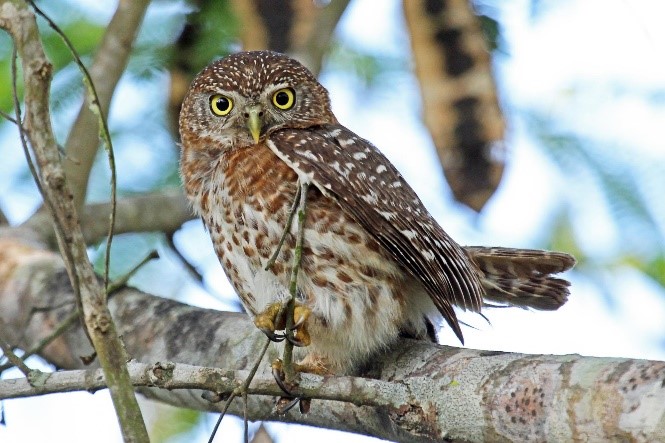Birdfinding.info ⇒ Fairly common across most of Cuba. It can often be found at many of the frequently visited sites, including Viñales, Las Terrazas, Playa Larga, Soplillar, Bermejas, Finca La Belén, and Guardalavaca.
Cuban Pygmy-Owl
Glaucidium siju
Endemic to Cuba and its satellites, including the Isle of Youth, where it is widely distributed in all kinds of woodlands.
Identification
Unique within its range. A typical pygmy-owl that occurs in a spectrum of color morphs from rufous to dark-brown, including many that are mixed: e.g., cold-brown above and rusty below.

Cuban Pygmy-Owl, rufous morph. (Guantánamo Bay, Cuba; January 28, 2017.) © Wayne Fidler
The crown is finely spotted, and the upperparts are otherwise mostly brown with sparse white spots on the back and narrow white bars on the wings and tail. It has dark “false eye” patches on the nape.

Cuban Pygmy-Owl, showing “false eye” patches on nape. (Najasa, Camagüey, Cuba; February 25, 2016.) © Joshua D. Vandermeulen
The underparts are white overall with brown or rusty spots of variable size and density that form a vest across the chest and sides and rows down the breast and belly.
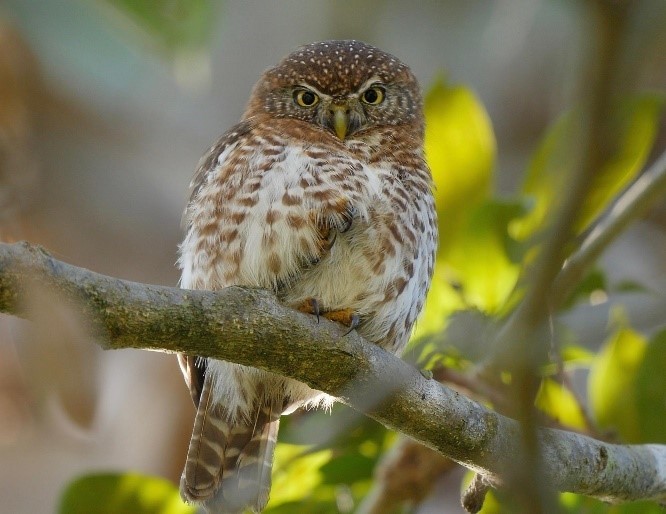
Cuban Pygmy-Owl, ventral view showing rows of spots on the underparts. (Soplillar, Matanzas, Cuba; January 20, 2017.) © Greg Baker

Cuban Pygmy-Owl, in flight, showing barring on the underwing and tail. (Holguín, Cuba; October 20, 2010.) © tiny fishy
Notes
Polytypic species consisting of three recognized subspecies.
More Images of the Cuban Pygmy-Owl

Cuban Pygmy-Owl, dark brown morph. (Guantánamo Bay, Cuba; May 9, 2018.) © Wayne Fidler
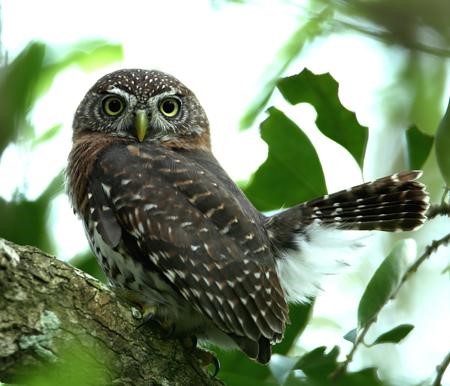
Cuban Pygmy-Owl, dark brown morph. (Guanahacabibes Peninsula National Park, Cuba; December 3, 2014.) © Hal and Kirsten Snyder

Cuban Pygmy-Owl, dark brown above with rufous underparts. (Bolondron, Guanahacabibes Peninsula National Park, Cuba; March 21, 2015.) © Allan Hopkins
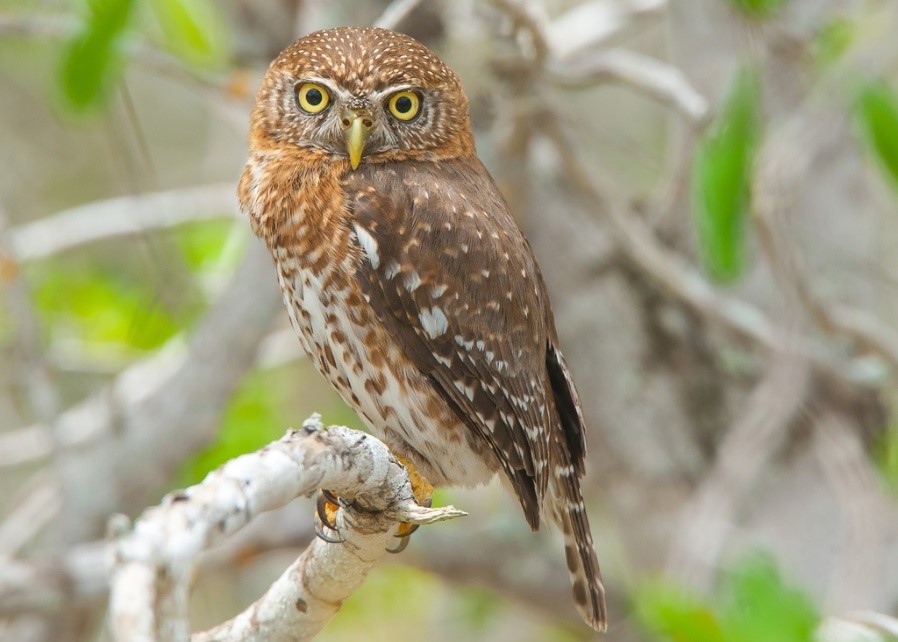
Cuban Pygmy-Owl. (Guantánamo Bay, Cuba; May 13, 2018.) © Wayne Fidler

Cuban Pygmy-Owl, rufous morph, dorsal view. (Guantánamo Bay, Cuba; June 19, 2019.) © Wayne Fidler

Cuban Pygmy-Owl, dark brown morph, dorsal view. (Bermejas Wildlife Refuge, Matanzas, Cuba; October 14, 2016.) © David Marjamaa

Cuban Pygmy-Owl, very dark brown morph. (Soplillar, Matanzas, Cuba; January 28, 2018.) © Felipe Pimentel

Cuban Pygmy-Owl, in threat posture. (Guanahacabibes Peninsula National Park, Cuba; May 24, 2017.) © Rafy Rodríguez
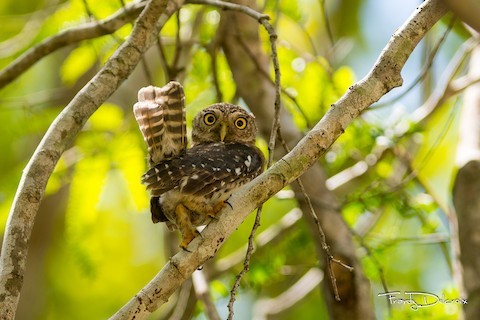
Cuban Pygmy-Owl, with tail fully cocked, showing bars on undertail. (Bermejas Wildlife Refuge, Matanzas, Cuba; July 18, 2017.) © Frantz Delcroix

Cuban Pygmy-Owl, warm brown above with rufous head. (Guardalavaca, Holguín, Cuba; August 19, 2015.) © Raymond Marsh

Cuban Pygmy-Owl. (Las Tumbas, Guanahacabibes Peninsula National Park, Cuba; May 17, 2019.) © Andre Moncrieff

Cuban Pygmy-Owl, vocalizing. (Najasa, Camagüey, Cuba; February 25, 2016.) © Joshua D. Vandermeulen
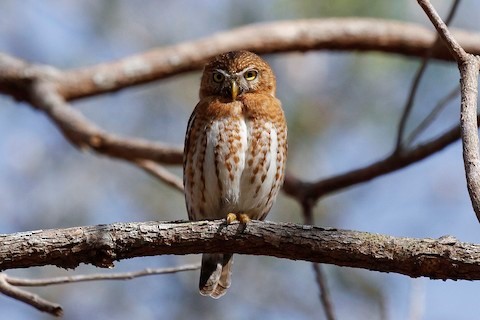
Cuban Pygmy-Owl, rufous morph. (Rancho La Belén, Camagüey, Cuba; March 4, 2016.) © Peter Kennerley

Cuban Pygmy-Owl, fully inflated. (Moron, Ciego de Ávila, Cuba; March 8, 2017.) © Warren Dunlop
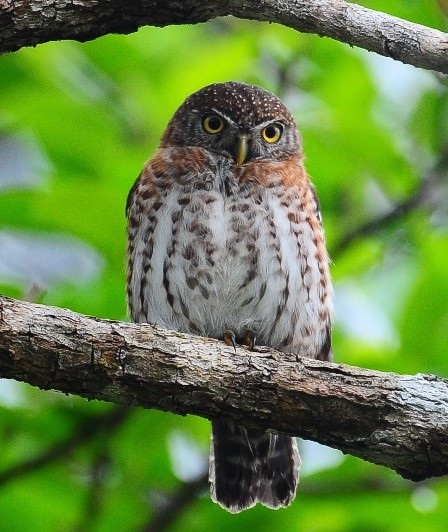
Cuban Pygmy-Owl, with dark brown upperparts and mixed rufous and dark brown on underparts. (Finca La Belén, Camagüey, Cuba; March 13, 2014.) © Stuart Elsom
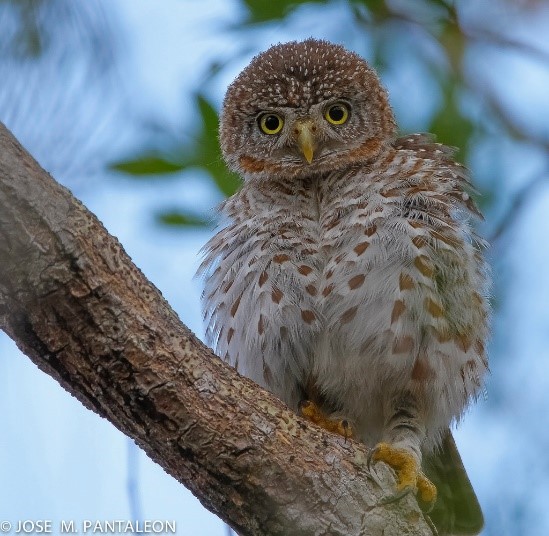
Cuban Pygmy-Owl, with all feathers raised. (Guanahacabibes Peninsula National Park, Cuba; May 24, 2013.) © José M. Pantaleón I.

Cuban Pygmy-Owl, showing rows of dark spots on breast. (Soplillar, Matanzas, Cuba; January 28, 2018.) © Felipe Pimentel
References
BirdLife International. 2016. Glaucidium siju. The IUCN Red List of Threatened Species 2016: e.T22689262A93224271. https://dx.doi.org/10.2305/IUCN.UK.2016-3.RLTS.T22689262A93224271.en. (Accessed October 21, 2019.)
eBird. 2019. eBird: An online database of bird distribution and abundance. Cornell Lab of Ornithology, Ithaca, N.Y. http://www.ebird.org. (Accessed October 21, 2019.)
Enríquez, P.L., K. Eisermann, H. Mikkola, and J.C. Motta-Junior. 2017. A Review of the Systematics of Neotropical Owls (Strigiformes), Neotropical Owls: Diversity and Conservation (P.L. Enríquez, ed.). Springer International Publishing, Cham, Switzerland.
Garrido, O.H, and A. Kirkconnell. 2000. Field Guide to the Birds of Cuba. Cornell University Press, Ithaca, N.Y.
Kirwan, G.M., A. Levesque, M. Oberle, and C.J. Sharpe. 2019. Birds of the West Indies. Lynx Edicions, Barcelona.
König, C., and F. Weick. 2008. Owls of the World (Second Edition). Yale University Press.
Mikkola, H. 2013. Owls of the World: A Photographic Guide (Second Edition). Firefly Books, London.
Navarro, N. 2015. Field Guide to the Endemic Birds of Cuba. Ediciones Nuevos Mundos, St. Augustine, Florida.
Raffaele, H., J. Wiley, O. Garrido, A. Keith, and J. Raffaele. 1998. A Guide to the Birds of the West Indies. Princeton University Press, Princeton, N.J.
Xeno-Canto. 2019. Cuban Pygmy Owl – Glaucidium siju. https://xeno-canto.org/species/Glaucidium-siju. (Accessed October 21, 2019.)
